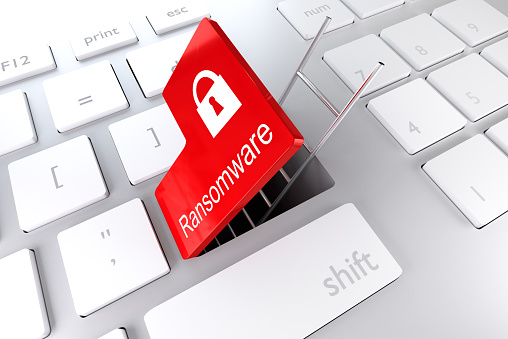It started with personal computers and then morphed to attack business data. The “it” is ransomware, and it is the latest way that black hat hackers have caused concern for individuals and businesses alike.

Ransomware is when an outsider gains control of your computer from an email you opened or a file you downloaded. The hacker criminal gains control of your computer and locks you out. He or she now has complete control of your computer and offers to unlock it for a fee. In legal terms, the criminal is extorting you for money in exchange for data that is already yours. Ransomware has proven to be very lucrative for hackers; the very existence of ransomware on a computer instills panic and fear into the victims in that the hackers have control of your data. If your system is infected with ransomware, messages you see may include:
Yet, paying the ransom offers no guarantee that the hacker will release your files. Protecting against ransomware isn’t hard, yet most businesses pay the ransom without protecting themselves from another attack.
Steps to Take to Decrease Vulnerability to Ransomware
You will have little, if any, expense in protecting your data from being victimized by ransomware. Take the needed steps now by contacting us.Centerpoint IT is the trusted choice when it comes to staying ahead of the latest information technology tips, tricks and news. Contact us at (404) 781-0200 or send us an email at info@centerpointit.com for more information.
Call our business managed IT services department directly at (404) 777-0147 or simply fill out this form and we will get in touch with you to set up a getting-to-know-you introductory phone call.
Fill in our quick form
We'll schedule an introductory phone call
We'll take the time to listen and plan the next steps
11285 Elkins Rd Suite E1, Roswell, GA 30076
© Copyright 2024 Centerpoint IT. All Rights Reserved. Website in partnership with Tech Pro Marketing. | Privacy Policy
Get Immediate Help For All Your Technology Issues (404) 777-0147

If you want our team at Centerpoint IT to help you with all or any part of your business IT, cybersecurity, or telephone services, just book a call.
Fill in your information below to get started today.
"*" indicates required fields
Fill in your information below to schedule now.
"*" indicates required fields
Before your organization commits to 1, 2, 3 or even longer managed IT services contract, understand what you’re getting. Centerpoint IT gives you the facts in our Managed IT Services Buyer’s Guide.
Enter your information below and we’ll send it over.
"*" indicates required fields

We are turning 15 and want to celebrate this milestone with you because without you this would not have been possible. Throughout this year look for special promotions on services and tools aimed at Making IT Simple for You so you can focus on your business.

We are turning 15 and want to celebrate this milestone with you because without you this would not have been possible. Throughout this year look for special promotions on services and tools aimed at Making IT Simple for You so you can focus on your business.
https://calendly.com/centerpoint-it/discovery-call